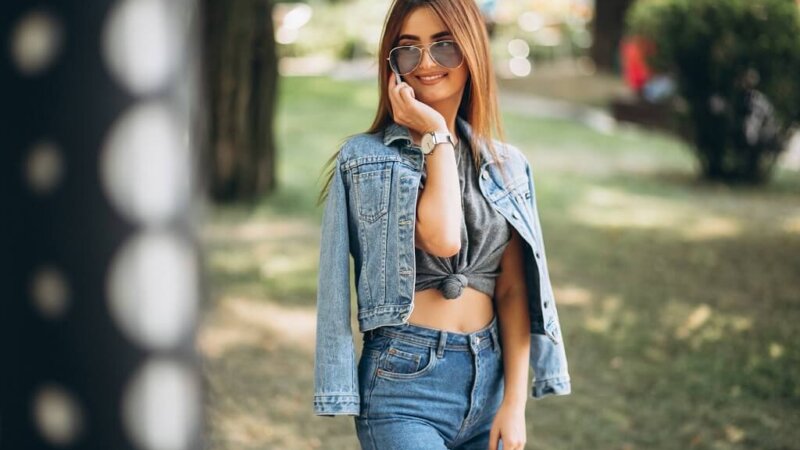What is Hair Relaxing vs. Hair Rebonding?
Every woman on this planet loves smooth, frizz-free hair! And it won’t be wrong to say that you too have tried and tested several remedies to get your locks the way you want them to be.
It’s only natural that, at times, you must have ended up with dejection. But thanks to the prolific advancement we’ve witnessed in beauty and healthcare, now all your dreams can be put on the platter and served to you right on the table!
Did you get it? No? Worry not! Let’s simplify what we intend to say.
Working women will inevitably run out of time to prepare DIYs due to their hectic schedules and hectic lifestyles. This is where chemical advancement has integrated into beauty and healthcare and given the ladies a reason to just lay back and style their hair in fashion, like they always dreamt of!
So, ladies, amp up, because we are here with two astounding solutions that your hair is going to love, big time! The decision is yours to make at the end. Let us get started ASAP!
Hair Relaxing vs. Hair Rebonding: Understanding the Basics
Understanding Hair Relaxing Treatment
The primary goal of hair relaxer treatment is to straighten the hair. However, unlike hair rebonding, the hairdresser only partially straightens the hair when relaxing. Instead, it entails easing up on extremely tight curls. If you want your hair fully straight after relaxing it, you will need to straighten it afterwards.
Most of the time, lye-based chemicals, like sodium hydroxide, are used by stylists to relax hair. Because it has a high pH and is a strong alkaline, lye assists in swiftly straightening hair. Alternative lye-free relaxants like guanidine hydroxide are also an option.
Most importantly, because it doesn’t completely straighten your curls, hair relaxing may be more economical and time-saving.
However, if done incorrectly, hair relaxing techniques can have dreadful side effects like irritated scalps, dry hair, and even hair loss.
Therefore, if you want a calming treatment for your hair, you must schedule a consultation with a skilled stylist.
A professional hairdresser’s experience and knowledge would be helpful in choosing and effectively using the right chemicals on your hair. Additionally, it would ensure that you rinse your hair promptly to prevent further harm to your hair or scalp.
Understanding Hair Rebonding Treatment
The method of rebonding hair straightening originated in Japan. Rebonding is also known as thermal reconditioning and Japanese straightening. Later, this method of hair straightening evolved and gained popularity among Asian groups.
Hair rebonding uses chemicals and heat to straighten hair in a manner similar to hair relaxing. Rebonding employs a mixture of perming solution and a strong chemical solution, such as ammonium thioglycolate, guanidine hydroxide, or sodium hydroxide. Hairdressers use a hot flat iron to straighten the hair since hair rebonding is a procedure that aids in breaking the hair connections.
In most cases, rebonding produces gorgeous-looking hair with a rich, natural texture that often lasts for up to seven months. If you want to pursue rebonding, you should be aware that the treatment is irrevocable and any hair damage is permanent.
However, there are a few similarities between hair relaxer treatment and rebonding that you ought to know before you choose which one goes well with your hair. For your reference, we shall also cover the differences.
The Similarities Between Relaxing and Rebonding
- Both hair relaxing and rebonding are methods of hair straightening.
- To get the desired effect, these techniques employ various chemicals.
- Side effects, including dry hair and hair loss are possible with both relaxing and rebonding.
The Differences Between Relaxing and Rebonding
- Hair relaxing is a hair straightening procedure that relaxes tight curls, whereas rebonding is a hair straightening process that eliminates hair links.
- The chemicals used in hair relaxing are generally lye-based, such as sodium hydroxide. However, non-lye relaxers such as guanidine hydroxide can also be used. Rebonding, on the other hand, employs a mixture of perming solution and a solution of powerful chemicals such as ammonium thioglycolate, guanidine hydroxide, or sodium hydroxide.
- Hairdressers use a hot flat iron to re-establish the bonds and straighten the hair during rebonding. As a result, following a rebonding treatment, post styling is frequently unnecessary. However, hair relaxing does not completely straighten the hair, so it requires further styling.
A suggestion to take home!
The final decision is on you, which treatment you want to opt for. Choose one that best suits your hair needs so that your hair problems can go to the back seat and just relax.
Either hair relaxing treatment or rebonding, you will be satisfied with the end results, providing, we suggest, you get it done meticulously and under a specialist’s guidance.







